Cathedral of Santa Maria Assunta
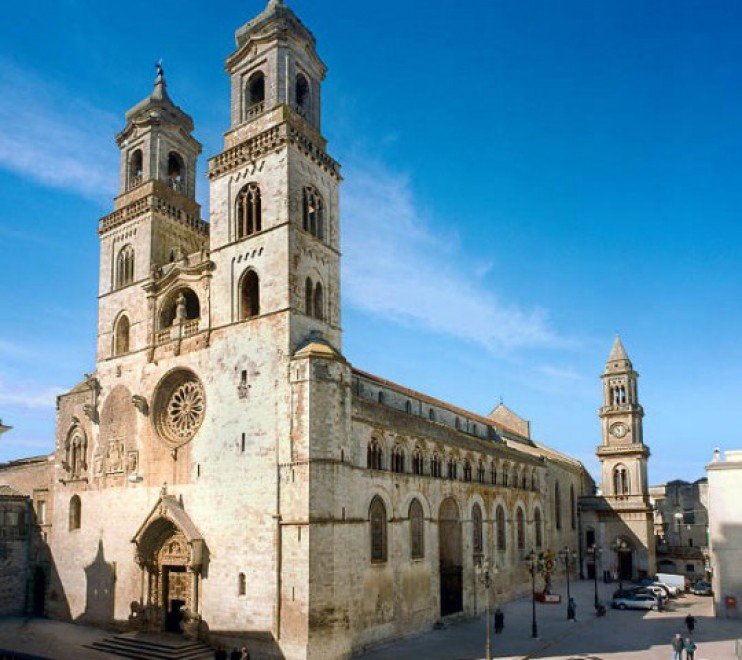
The Church of Santa Maria Assunta is the Cathedral of Altamura and the Cathedral of the diocese of Altamura-Gravina-Acquaviva delle Fonti.

The city of Altamura was repopulated by Emperor Frederick II in the first half of the 13th century. In this same period, between 1232 and 1254, the cathedral dedicated to the Assumption was erected at the behest of the emperor himself, the first and oldest monument in the city, with the facade originally facing the city of Gravina.

Almost all openings have pointed Gothic arches, without excluding an immediate influence of Arab-Norman architecture. Frederick built it as a palatine chapel, and therefore with exemption privileges from any jurisdiction other than that of the sovereign.

Subsequent sovereigns confirmed these privileges until 1929, when, following the Lateran Pacts, for the first time a pope of Rome was able to appoint the bishop of the cathedral. According to what has been handed down by some local historians of previous centuries, the Cathedral of Altamura was built on a pre-existing pagan temple.
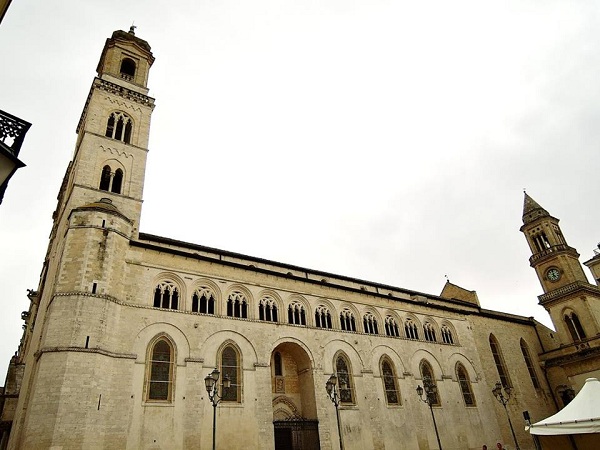
Domenico Santoro (1688) hypothesizes that it may have been a temple dedicated to Castor and Pollux, since two statues of Castor and Pollux were visible on the capitals of the cathedral choir at least until the eighteenth century.

Recent archaeological excavations have confirmed the influence of Magna Graecia in the area of the city of Altamura, in particular between the 4th and 3rd centuries BC.

The priest Don Vitangelo Frizzale (1755), on the other hand, reports that the previous temple was a temple of two-faced Janus, therefore a purely Roman deity. According to some, this news was supported by the presence of a two-faced herm on the cusp of the ancient facade of the cathedral.
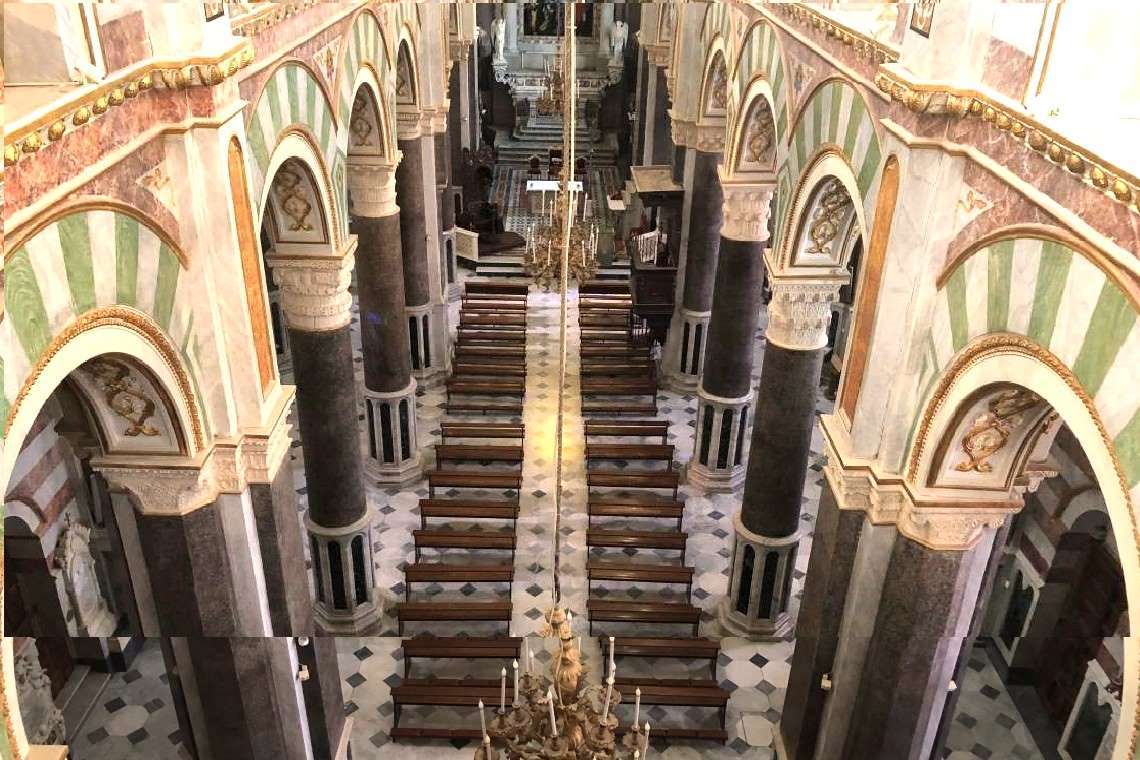
The recent cleaning and restoration works of the cathedral have highlighted how it is, instead, a stone sculpture of the head of a Saracen. The sculpture had an apotropaic function, and evoked the fears of a Saracen invasion, which in the sixteenth century became a real threat to Christian Europe.
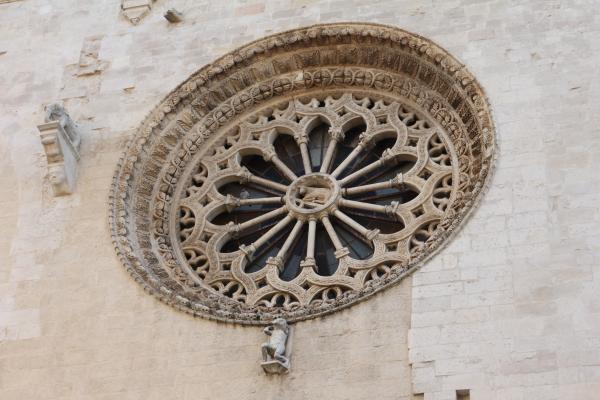
In an inscription in Latin in Gothic characters above the so-called Angevin door (in the past also called "door of the apothecaries") it is written that the church collapsed on 29 January 1316 and was rebuilt with the help of Bitontine workers (the sons by Mastro Consiglio da Bitonto).
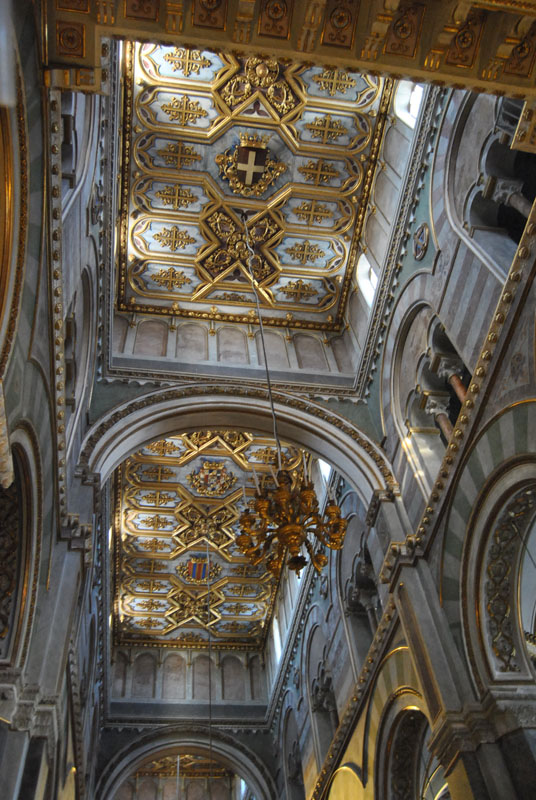
The first to read and correctly translate the inscription into Latin was Ottavio Serena, as he himself states in his "Storia di Altamura" (second half of the nineteenth century). Previous historians had mistranslated the inscription (which in itself is ruined and written in a somewhat ungrammatical Latin) and believed that the inscription referred to a privilege that Altamura enjoyed for which the mayor of Bitonto used to come to Altamura to get the price list of the various foods and to disclose it to the entire province.
In 1485 the church was elevated to the rank of distinguished collegiate church and this led to an increase in the number of priests who officiated in the cathedral and therefore the need to increase the space of the presbytery and choir area. There is debate among scholars and historians on the alleged inversion of the orientation of the church carried out in the sixteenth century to achieve a greater depth of the choir: some argue that the entire facade, with portal and rose window, was dismantled and repositioned where it is now; others, on the other hand, argue the impossibility of this operation and therefore affirm that the current prospectus retains a physiognomy very close to the Federician original.

The reality of the facts, in the light of the latest restoration, is that the facade has never been moved (proof of this during the restoration of the trusses the Romanesque "hanging arches" that adorned the original 13th century facade were found), but simply the current one is nothing more than the readjustment of the façade that in the Frederick era enclosed the three apses (one of which is visible today as it is the housing of the great baptistery, to the left of the fourteenth-century portal).

This operation will be followed, later in the years, by the expansion of the choir. It is visible from the outside due to the marked diversity of the segments. That limit now clearly visible for anyone visiting the basilica from its churchyard, is the precise point where the first facade stood in the thirteenth century.

In the 16th century, a symmetrical one was added to the existing bell tower; later they were lengthened and completed with the addition of two bell cells in the eighteenth century. The rich decoration of the side altars and the main altar (1793) also date back to the eighteenth century. Instead it is the result of the modernization work carried out between 1850 and 1860 by the architect Travaglini the neo-Gothic style decoration that covers the whole church (central nave and side aisles) in two-color alternating with gilds and stuccos.

During the so-called Revolution of Altamura (1799), the priest of the cathedral Nicola Popolizio, who took an active part in the revolt, was tortured to death in the portico in front of the same cathedral; the canon Celio Colonna was slaughtered inside the cathedral while praying in the chapel of San Giuseppe.
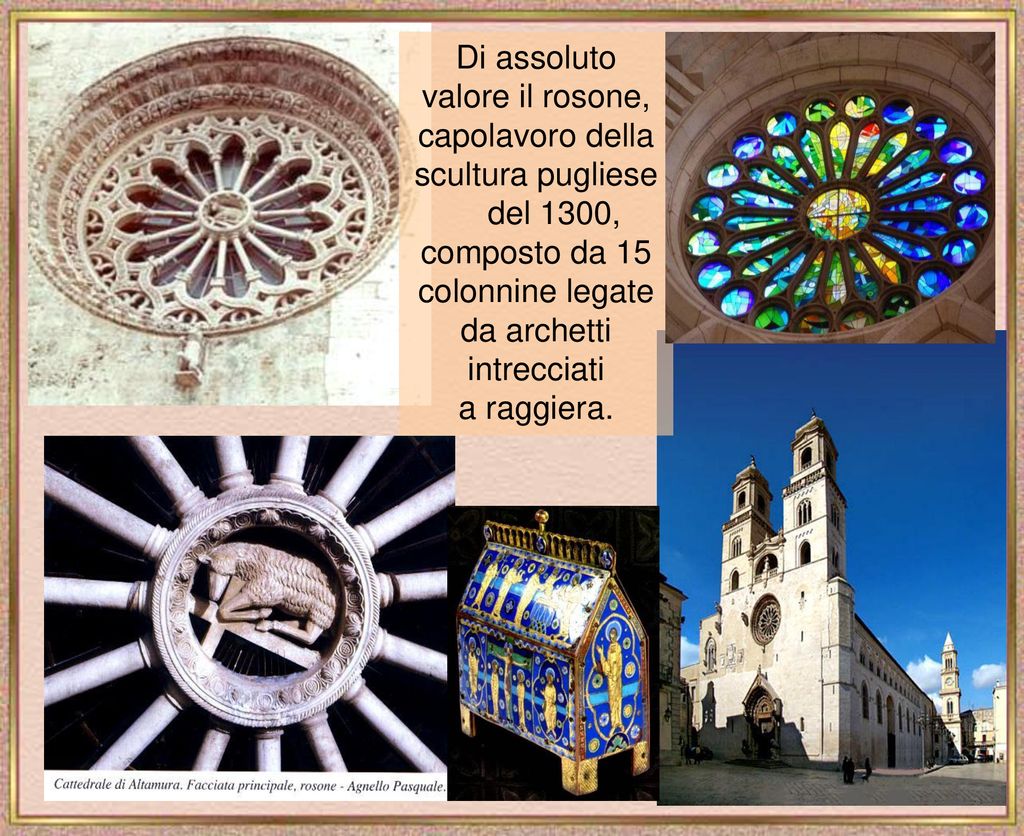
Another noteworthy chapel is that of Santa Rosalia, which is due to the archpriest of the cathedral Pietro Magri (1622-1688), a native of Palermo.

With royal decree n. 1746 of 21 November 1940, the cathedral of Santa Maria Assunta in Altamura is recognized as an Italian national monument.
Video: Cathedral of Santa Maria Assunta
Map: Cathedral of Santa Maria Assunta
Address: Corso Federico II di Svevia, 70022
Altamura (BA) Puglia
Latitude: 40.82732762967733
Longitude: 16.55287742614746
Site: https://www.diocesidialtamura....
vCard created by: Nunzio
Currently owned by: Nunzio
Type: Building
Function: Church
Creation date: 21-04-2022 09:41
Last update: 22/04/2022